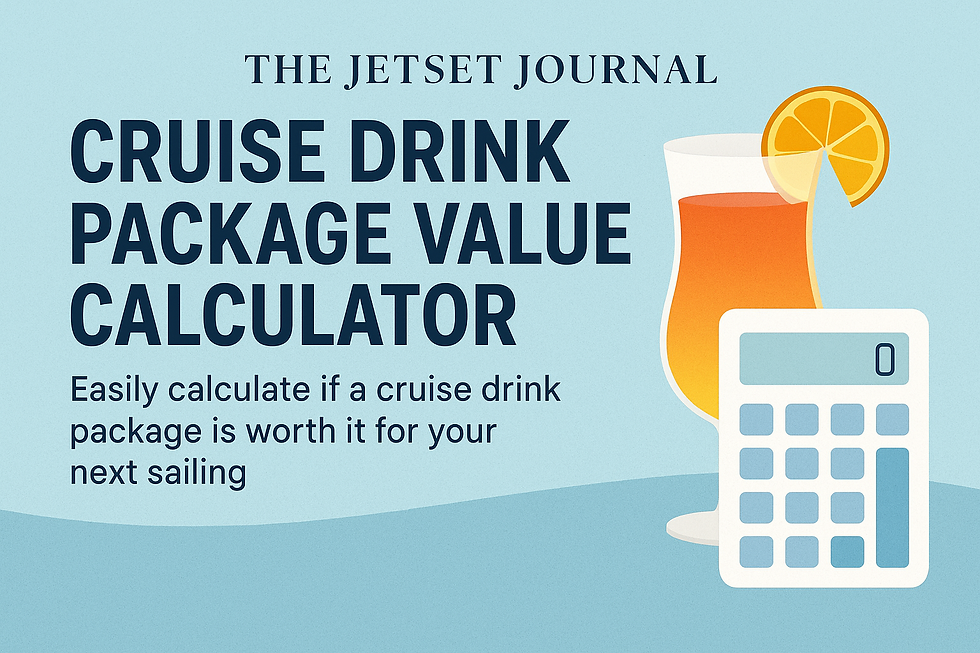US Airline Fares Fall by 2%: What This Means for Your 2025 Travel Plans
- Jetsetter

- Apr 16
- 3 min read

Across the United States, travelers are noticing a welcome trend—airline fares are down. Recent reports reveal that average US airfares have decreased by two percent between March 2024 and March 2025. This shift is tied to several key factors that are collectively reshaping the travel industry. In this post, we break down the trends behind these changes and what they mean for savvy travelers planning their 2025 adventures.
Unpacking the Fare Decline
The drop in airfares is not happening by chance. Three major factors are at play:
Decreased Consumer Demand: With economic uncertainty looming over various sectors, consumer travel demand has taken a hit. As travelers reassess budgets amid concerns over rising costs and economic instability, airlines are feeling the pinch. This reduced demand has forced airlines to rethink their pricing strategies to stay competitive.
Aggressive Industry Promotions: To counteract the slowdown, many airlines are launching fare promotions and discounts. Heavyweights such as Delta, Frontier, American, Southwest, and JetBlue are offering lower fares to entice travelers, boost booking volumes, and fill seats on flights that might otherwise fly empty.
Economic Pressure Points: Broader economic factors—ranging from persistent inflation and trade tensions to potentially slowing GDP growth—further compound the pressure on consumer spending. These economic challenges have encouraged airlines to trim capacity and adjust routes, all contributing to the overall decrease in airfare prices.
Shifts in Airline Strategies
Major airlines aren’t just slashing prices; they’re rethinking their entire operational strategy. To stay afloat during these challenging times, carriers are:
Trimming Capacity: Airlines are reducing the number of flights and seats on routes experiencing lower demand. This helps control costs and maintain profitability.
Offering Lower Fares: Through targeted promotions, airlines are not only stimulating travel demand but also strategically positioning themselves against competitors.
These steps are instrumental in helping airlines navigate the turbulent economic landscape while keeping travel accessible for those planning trips in 2025.
The Bigger Picture: Overall Transportation Costs
Airline fare reductions are part of a broader trend. Overall transportation costs have also fallen, largely due to decreasing gasoline prices. This holistic decline in travel expenses is captured in NerdWallet's Travel Price Index, which confirmed a 2% decrease in average travel costs—spanning airfares, lodging, meals, and rental cars—compared to last year.
For travelers, this means more opportunities to book affordable vacations, whether you’re planning a quick getaway or an extended exploration.
What This Means for Travelers
As prices drop, the travel landscape becomes more enticing for budget-conscious explorers.
Here are a few tips to take advantage of these fare reductions:
Stay Informed: Keep an eye on fare alerts and promotions from major airlines. The competitive market means deals can pop up quickly.
Plan Ahead: With airlines adjusting capacity, booking earlier could ensure you snag the best deals on flights. Flexibility with travel dates can also help you take full advantage of discounted fares.
Bundle for Savings: Consider package deals that combine flights with lodging or car rentals. The overall decline in travel costs might lead to great bundled savings.
Embrace New Routes: As airlines revise routes to suit the changing demand, you might discover exciting new travel destinations or non-traditional travel itineraries.
Looking Ahead: The Future of Air Travel
While a two percent drop in fares marks a significant shift, it’s essential to view this trend as part of a dynamic, evolving industry. Economic uncertainties and consumer behavior will continue to influence pricing and airline operations. For modern travelers, staying adaptable and informed is crucial. The current pricing environment, highlighted by aggressive fare promotions and strategic capacity management, sets the stage for a travel market that's both competitive and consumer-friendly.
On The Jetset Journal, we’re committed to keeping you updated on these trends. Whether you're a globe-trotting veteran or planning your first international adventure, understanding these shifts helps you make informed decisions for a smoother, more affordable journey in 2025.
Travel smart and keep jet-setting—there's a world of deals waiting to be explored!
If you're curious about other emerging travel trends or need insights into optimizing your travel itinerary in this evolving market, let’s dive into the conversation. What destination are you eyeing for your next adventure, and how do you plan to capitalize on these fare reductions?






Comments